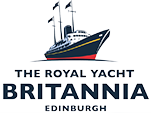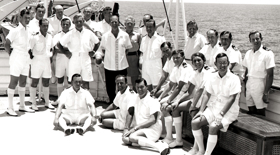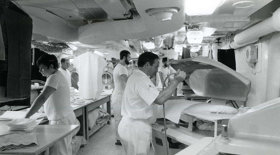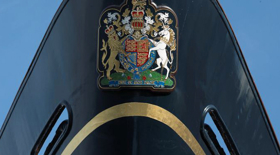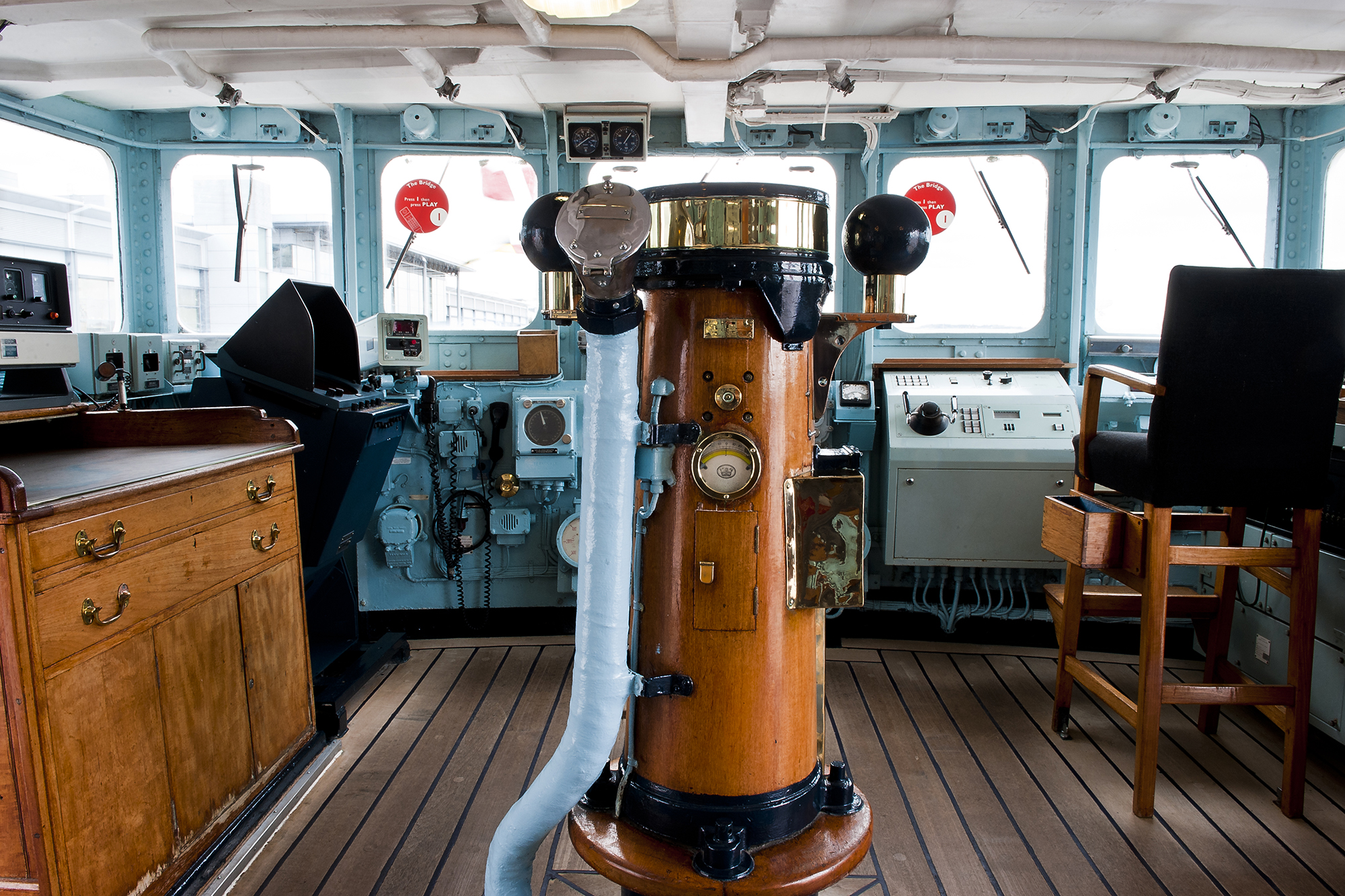Working Areas
What was it like to live and work on board the Royal Yacht for the Royal Yachtsmen or 'Yotties' as they are known?
The Bridge
This was the centre of command and control on board Britannia. Ultimate responsibility for the safety and wellbeing of the ship, crew, Royal Family and state events rested on the shoulders of one man - Britannia's Admiral or Commodore.
The Wheelhouse
Unlike many ships, Britannia's steering wheel was not on the Bridge, but in the Wheelhouse on the deck immediately below. Its location meant the Yachtsmen steering Britannia could not see where they were going, and were guided by orders linked by voice pipes from the Bridge above.
The Officers' Wardroom
This was Britannia's equivalent of a Gentleman's Club - here Britannia's 20 Officers would dine and relax in an atmosphere steeped in tradition. An invitation to dine with the Officers was much sought after by members of the Royal party. It was also tradition that the Captain did not dine with his fellow Officers, unless invited to do so.
Recreation Areas or 'Messes'
In the Navy different ranks have their own recreation areas, known as 'Messes'. These were very welcoming places to relax and unwind after a busy day in Royal service. Britannia was the last Royal navy ship in which crew members slept in hammocks, up until 1973.
The Unwinding Room
Rather unusually, Britannia had a mess area for all the Junior Ratings from different departments, so they could 'unwind' together. Over time, the Junior Ratings Recreational Space became better known as the Unwinding Room, and is held in deep affection by the 'Yotties'.
The NAAFI
Like all Royal Navy ships, Britannia had a Navy, Army and Air Force Institute shop, known as the NAAFI. It was here that the 'Yotties' could buy sweets, magazines, papers, special Britannia souvenirs and essentials such as toothpaste and razors.
The Sick Bay
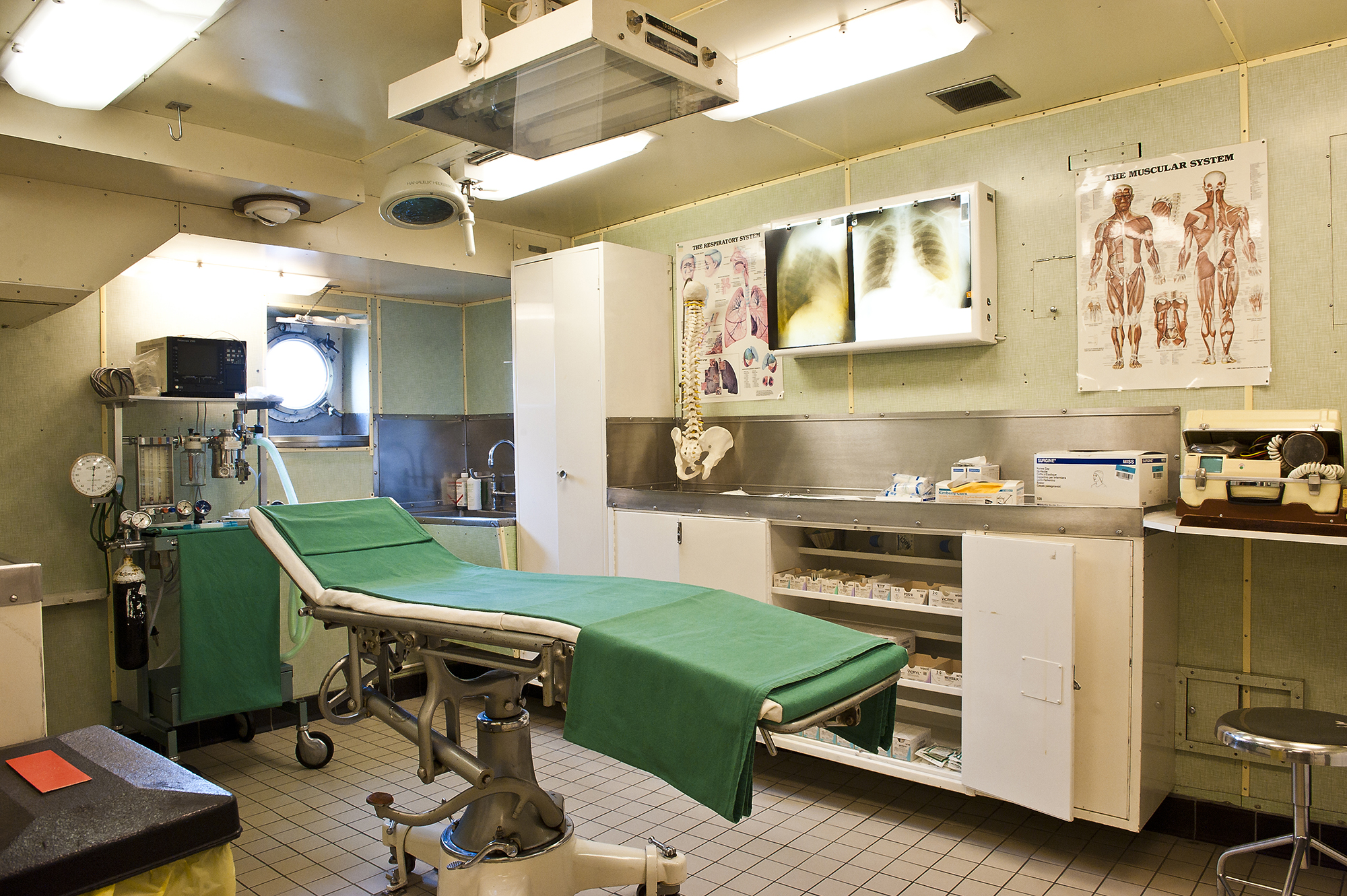
This was the one place the crew wanted to avoid. It was proposed when Britannia was built that she could perform a secondary role and be converted to a hospital ship during wartime. Although the ship was used in a rescue mission in war-torn South Yemen in 1986, she thankfully never had to fulfil this other role. This Department was staffed by a Naval Medical Officer and two medical Chief Petty Officers (CPOs), one an operating Theatre Nurse or Medical Assistant, the other a Chartered Physiotherapist. This team looked after the health and welfare of the Yacht's Company, Royal Household, and embarked guests. When Queen Elizabeth II embarked for state duties, she was accompanied by The Queen's Surgeon.
The Laundry
With over 240 Officers and Yachtsmen and numerous uniform changes required on a daily basis - the Laundry was very busy and very hot. Britannia was the only ship in the Royal Navy to have such a large Laundry; this was partly due to her potential secondary role as a hospital ship. The Laundry was staffed by its own crew, since the Royal Yacht was one of very few Royal Navy ships that did not have a Chinese Laundry service.
The Galleys
In addition to the two galleys which prepared all food for the Officers and crew, Britannia also had a Royal Galley located immediately ahead of the State Dining Room. When Queen Elizabeth II was on board her food was prepared by the chefs from Buckingham Palace. The storerooms could hold two month's supply of fish and meat, fresh bread was baked daily (as it is today for our Tea Room and for evening events) and there was a special cold room called the Jelly Room, where the Royal children's jellies were stored.
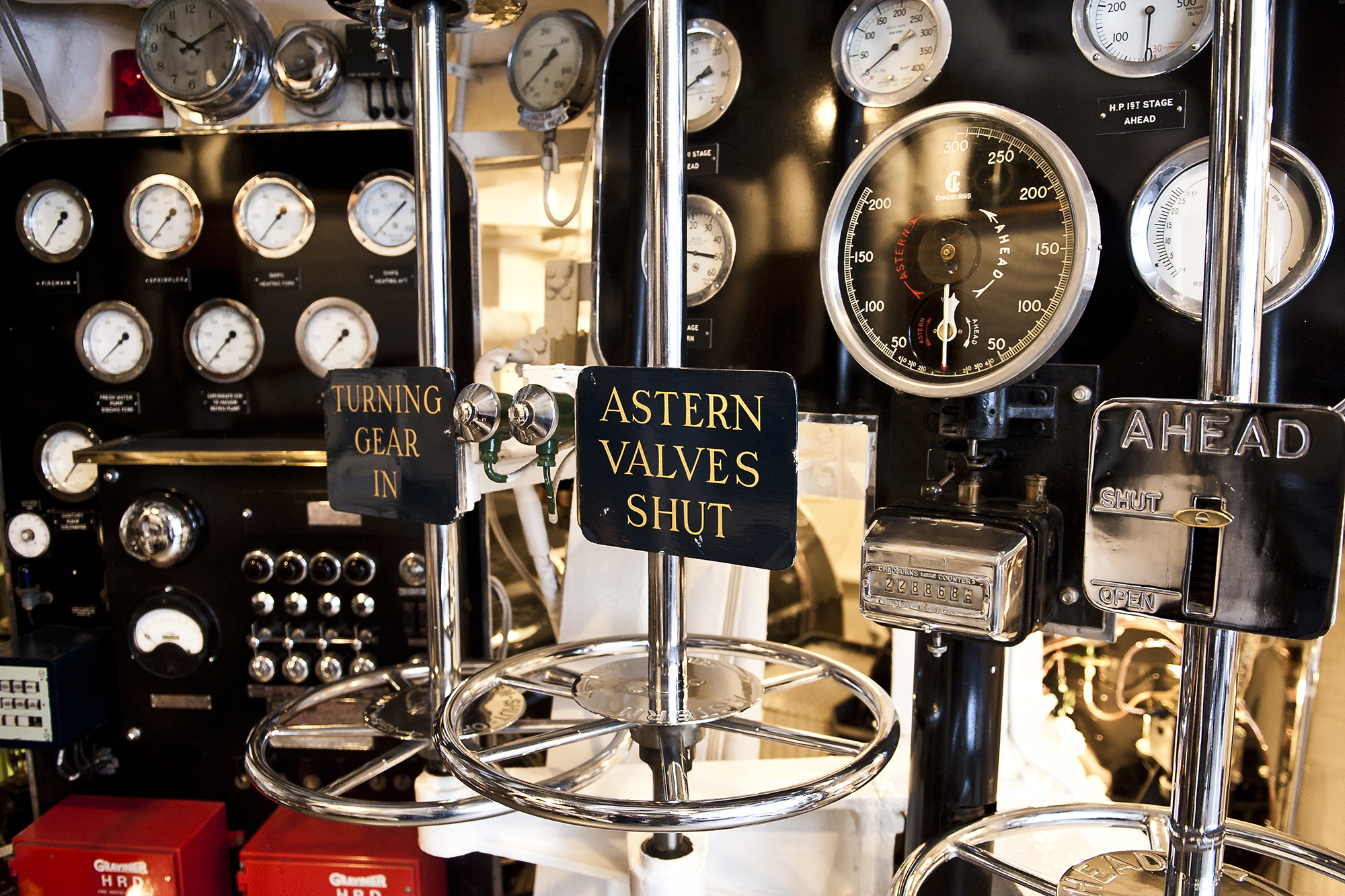
The Engine Room
An immaculate room of gleaming brass, chrome and white enamel, a testament to British engineering at its best. The engines steamed over 1 million nautical miles over 40 years with barely a problem. They turned out a total of 12,000 horsepower and drove Britannia and her four-bladed propellers to a maximum of 22.5 knots. Queen Elizabeth II was particularly fond of the Engine Room and would often take guests down to see it after dinner. When America's General Norman Schwarzkopf was shown Britannia's spotless Engine Room in 1992, he was reported as saying: 'Okay. I've seen the museum piece. Now, where's the real engine room?' It is true that the Engine Room, with its dials and old fashioned steam turbines, has an air of antiquity.
The sparkling chrome dials were used to monitor different stages of steam pressures and vacuums, which were critical to ensuring the safe passage of Britannia. The main machinery consists of two sets of turbines and gearing. Manning this room was labour intensive; at any one time, there would be eight men on duty in the Engine Room, Boiler Room and associated machinery rooms.
